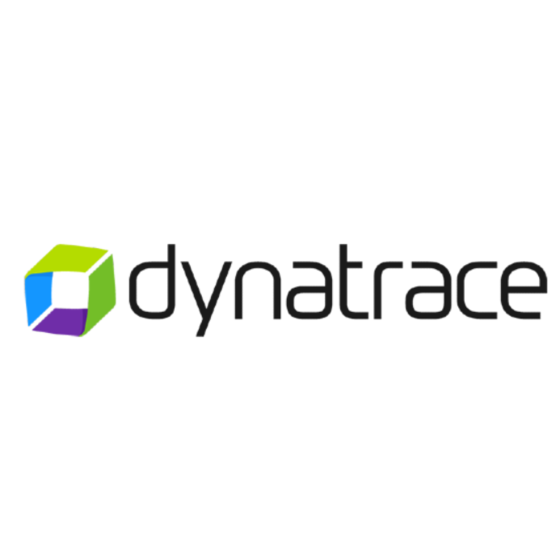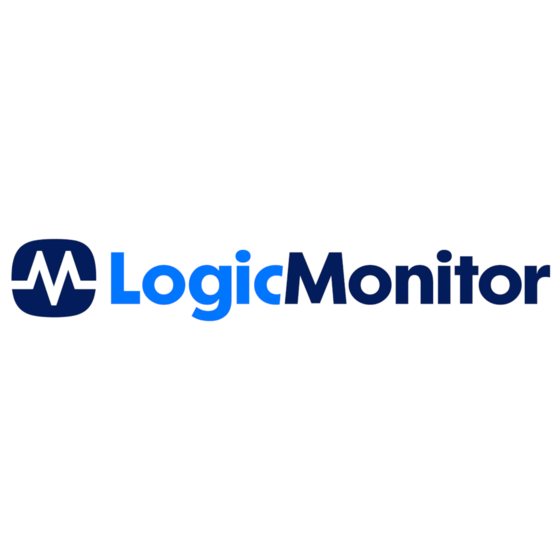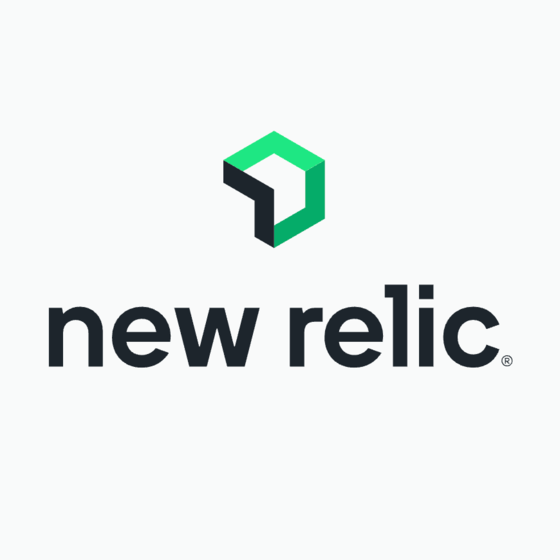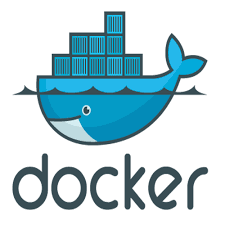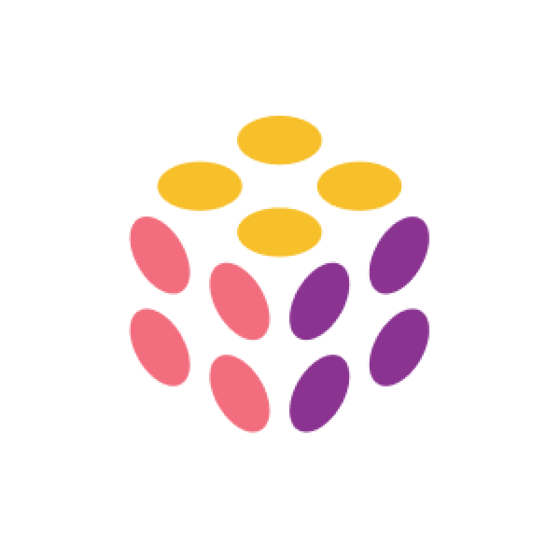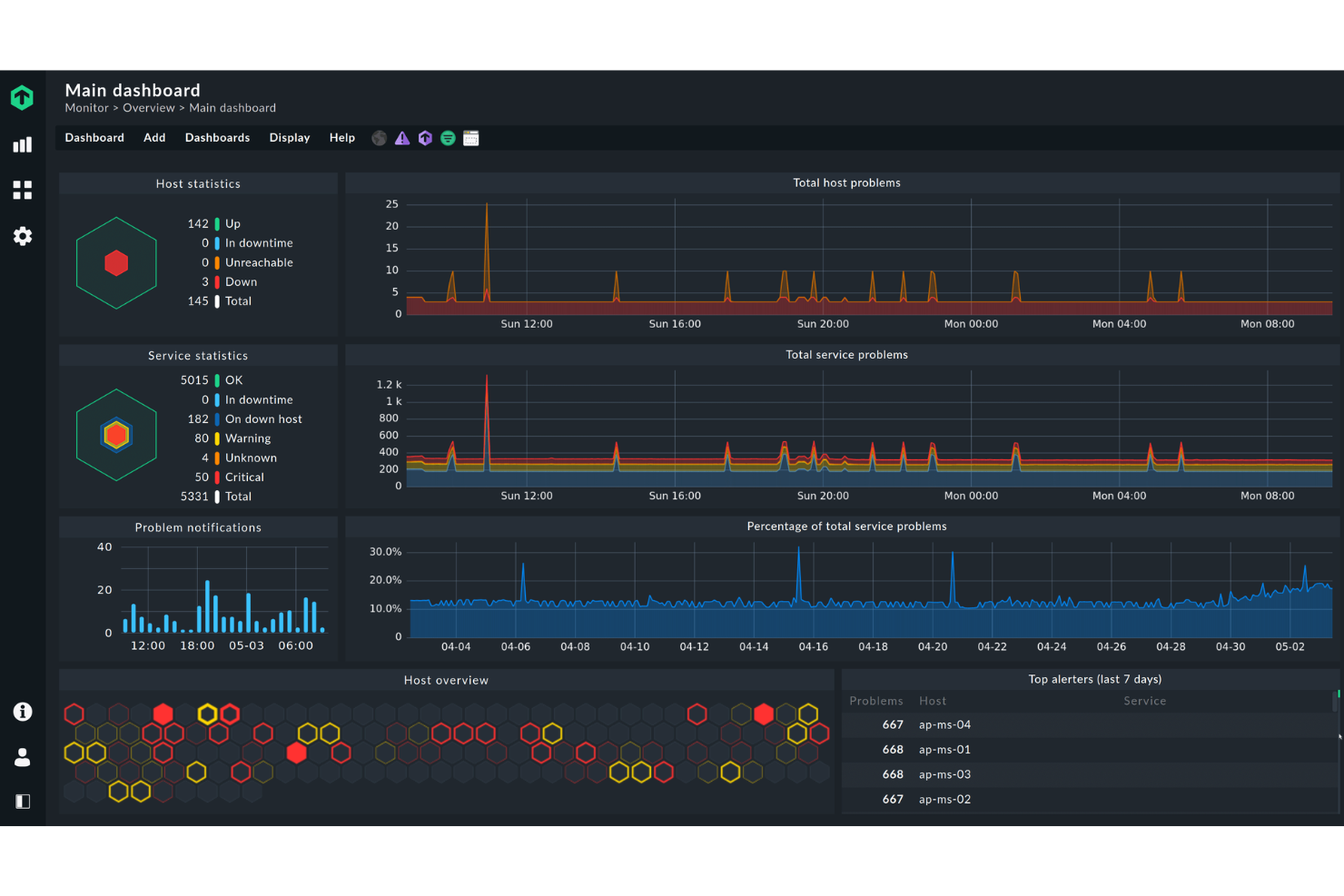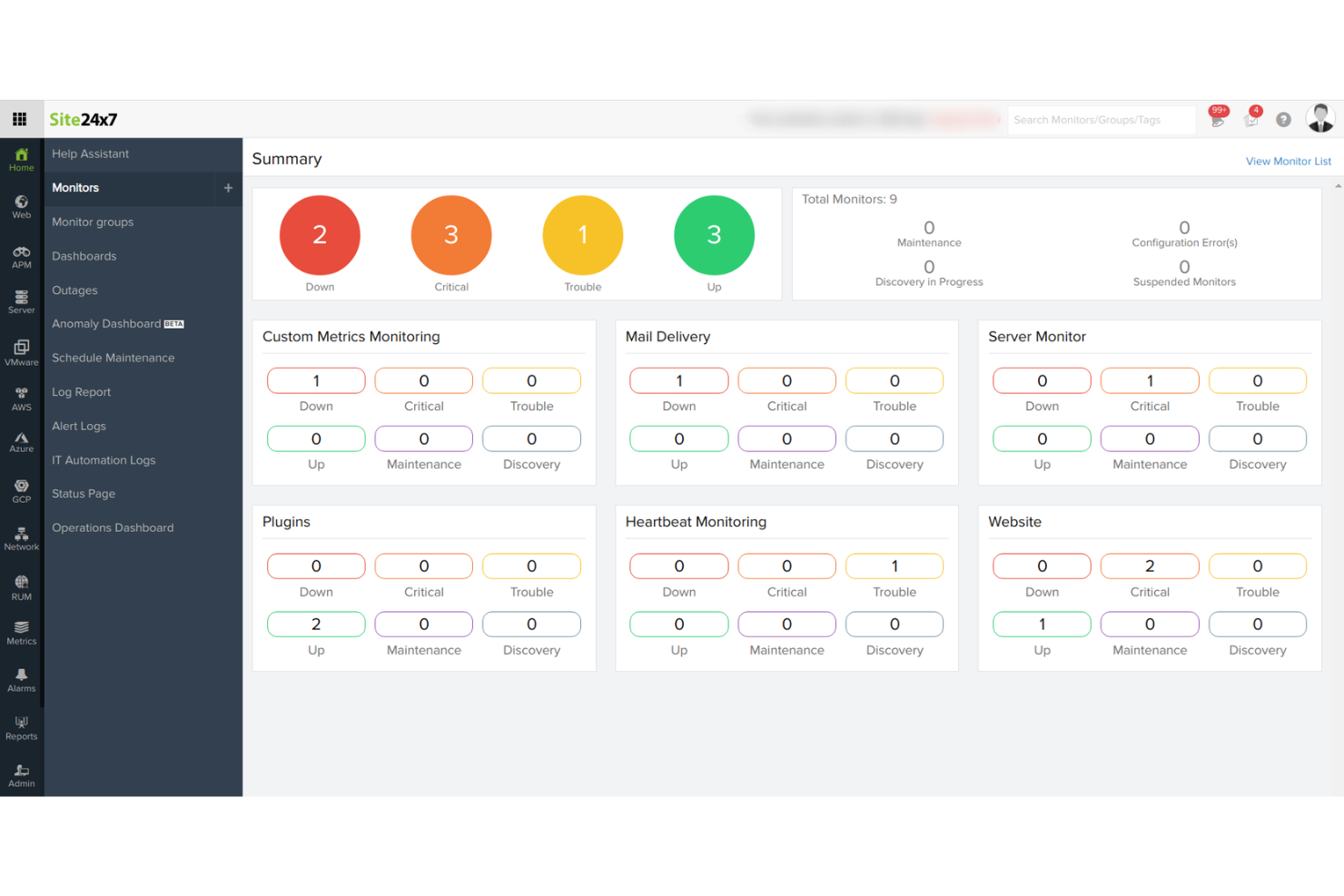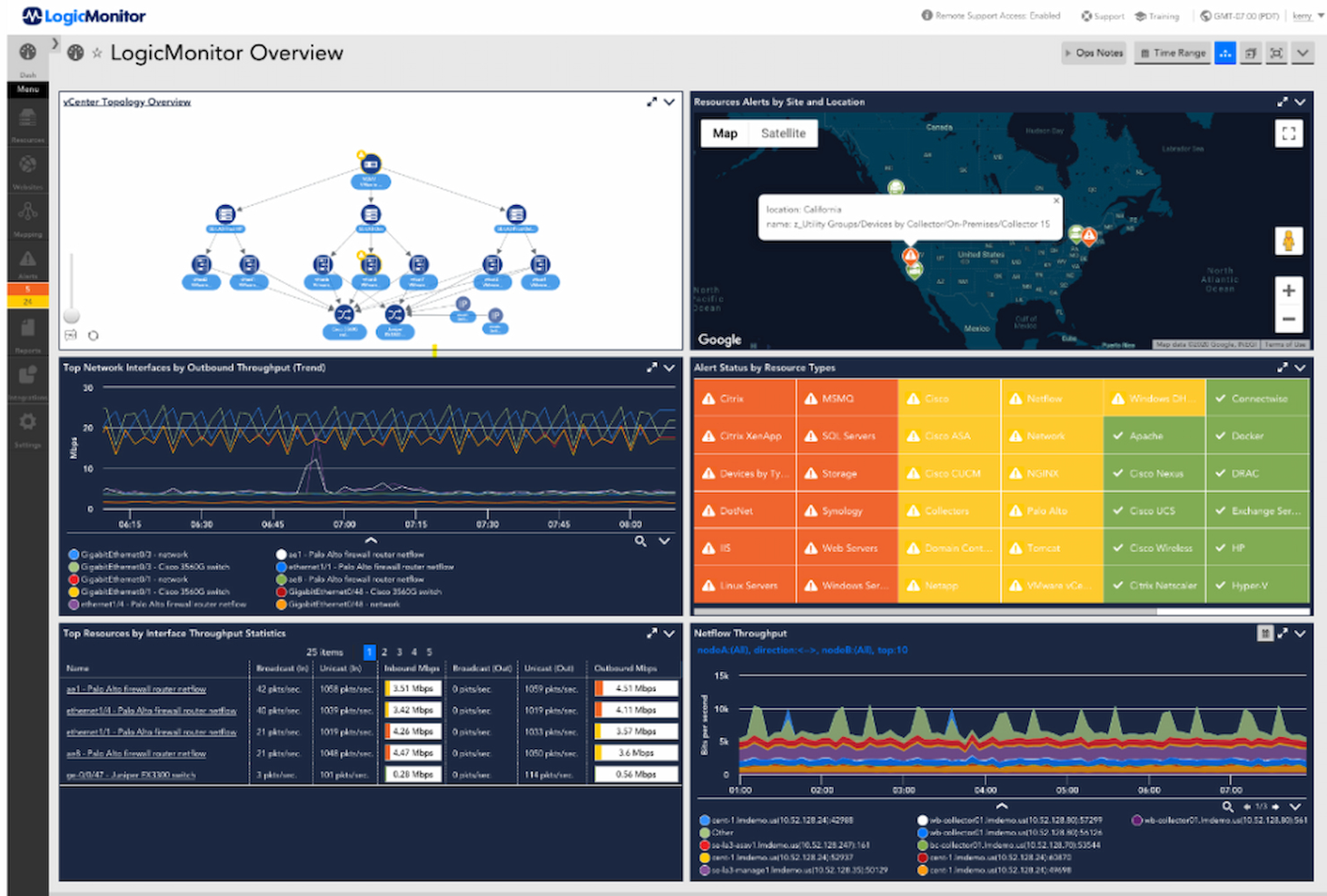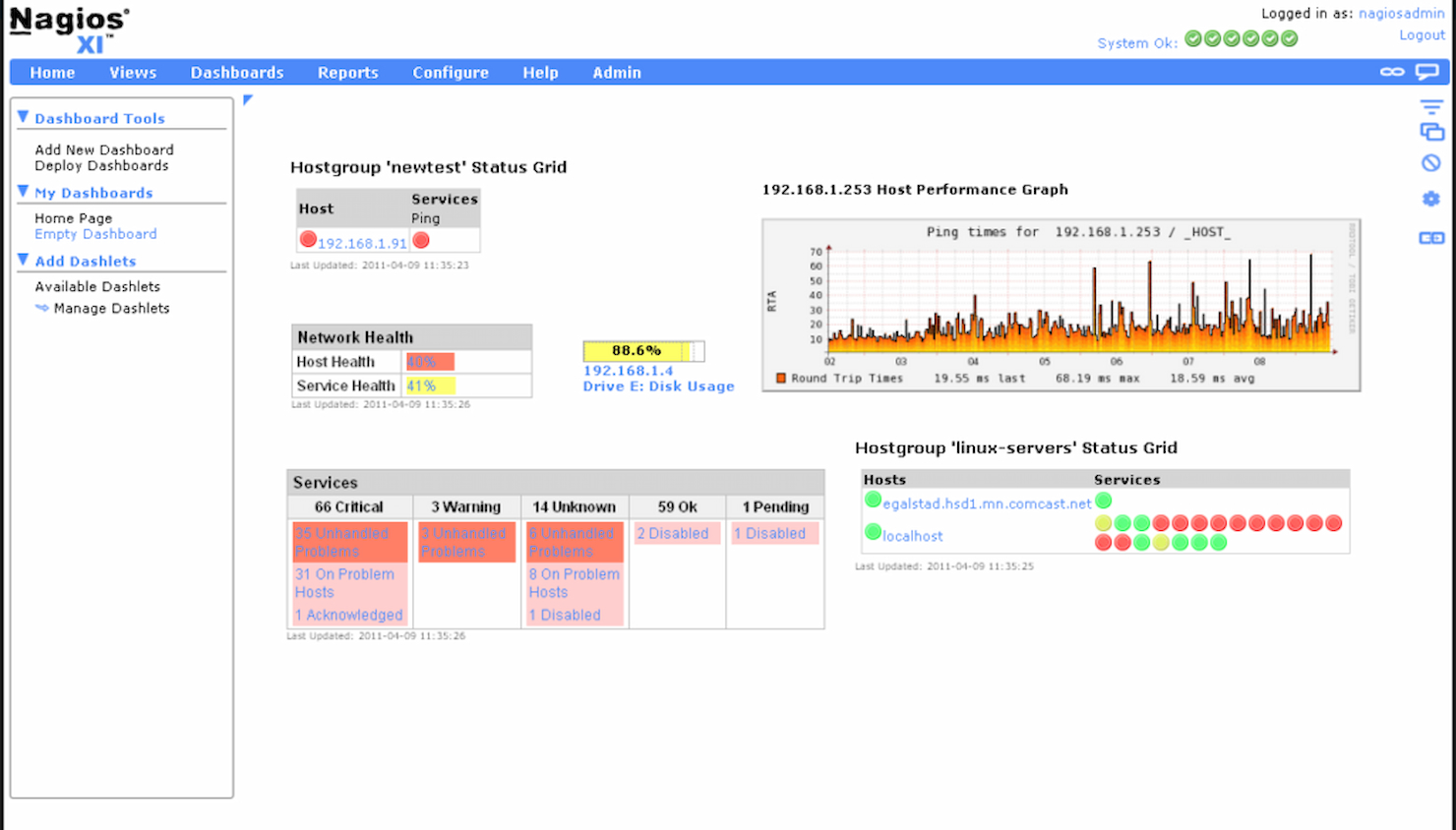Best Server Monitoring Tools Shortlist
Here’s my shortlist of the best server monitoring tools:
Our one-on-one guidance will help you find the perfect fit.
The best server monitoring tools help you detect downtime fast, pinpoint resource issues like CPU or memory spikes, and track server health before small problems turn into outages. They give you clear metrics and alerts so you’re not caught off guard by slow performance or sudden failures.
If you’ve ever had to SSH into a server at 2 a.m. to diagnose why a service went down, or dug through vague logs trying to spot what’s eating up disk space, you know how much time bad visibility costs. Teams often deal with monitoring setups that miss issues, flood them with noise, or don’t support hybrid environments.
I’ve tested server monitoring tools in production environments across SaaS stacks, hybrid cloud networks, and bare-metal setups. I’ve compared how they handle real incidents, how easy they are to configure, and how useful their alerting and dashboards actually are.
This guide breaks down the tools that deliver accurate alerts, clean dashboards, and flexible setup options so you can monitor your servers without wasting time chasing false alarms.
Why Trust Our Software Reviews
We’ve been testing and reviewing SaaS development software since 2023. As tech experts ourselves, we know how critical and difficult it is to make the right decision when selecting software. We invest in deep research to help our audience make better software purchasing decisions.
We’ve tested more than 2,000 tools for different SaaS development use cases and written over 1,000 comprehensive software reviews. Learn how we stay transparent and check out our software review methodology.
Best Server Monitoring Tools Summary
This comparison chart summarizes pricing details for my top server monitoring tools selections to help you find the best one for your budget and business needs.
| Tool | Best For | Trial Info | Price | ||
|---|---|---|---|---|---|
| 1 | Best for Windows server monitoring | Free demo available | Pricing upon request | Website | |
| 2 | Best for continuous server tracking | 30-day free trial | Pricing upon request | Website | |
| 3 | Best for large-scale server monitoring | Free trial available | Pricing upon request | Website | |
| 4 | Best for customizable monitoring dashboards | Free trial available | From $2,149/year | Website | |
| 5 | Best for extensive server metric tracking | Free trial + demo available | Pricing upon request | Website | |
| 6 | Best open-source solution | Free demo available | Free to use (with subscription options available) | Website | |
| 7 | Best for AI-powered application performance | 15-day free trial + demo available | From $0.0001 | Website | |
| 8 | Best for hybrid infrastructure monitoring | Free trial available | From $3/resource/month | Website | |
| 9 | Best for comprehensive IT infrastructure monitoring | 30-day free trial | From $20/user/month (billed annually) | Website | |
| 10 | Best for real-time application analytics | Free plan + demo available | Pricing upon request | Website |
-

Docker
Visit WebsiteThis is an aggregated rating for this tool including ratings from Crozdesk users and ratings from other sites.4.6 -

Pulumi
Visit WebsiteThis is an aggregated rating for this tool including ratings from Crozdesk users and ratings from other sites.4.8 -

GitHub Actions
Visit Website
Best Server Monitoring Tool Reviews
Below are my detailed summaries of the best server monitoring tools that made it onto my shortlist. My reviews offer a detailed look at the key features, pros & cons, integrations, and ideal use cases of each tool to help you find the best one for you.
Auvik is a cloud-based network management software designed to provide real-time visibility and control over your IT infrastructure. It offers comprehensive monitoring capabilities, particularly for Windows servers, ensuring optimal performance and minimal downtime.
Why I picked Auvik: I picked Auvik because of its real-time alerting and performance tracking features. It continuously monitors server health, including CPU, memory, and service status, and notifies your team when thresholds are breached—helping you catch and fix issues before they cause disruptions. Auvik also provides trend data that helps you forecast performance problems and make smarter capacity planning decisions. Plus, its server monitoring is agentless, so you don’t need to install anything directly on the server to start tracking its status.
Standout features & integrations:
Features include network inventory management, customizable alerting, remote management capabilities, network traffic analysis, IP address management, SNMP monitoring, syslog collection, VPN monitoring, wireless network monitoring, device configuration management, network topology visualization, and bandwidth utilization tracking.
Integrations include Atera RMM, ConnectWise Automate, Cisco devices, Aruba, Brocade, Dell, Extreme, Fortinet, Google environments, Gradient MSP, and ITBoost.
Pros and cons
Pros:
- Prompt alerting system for various issues
- Can back up and restore device configurations
- Provide immediate insights into network performance
Cons:
- Setting up more advanced functionalities can be challenging
- Limited support for non-Windows servers
ManageEngine OpManager is a server monitoring tool that helps you keep track of your network devices and servers. It offers real-time monitoring, alerting, and reporting to help you identify and resolve potential issues before they impact your business.
Why I picked ManageEngine OpManager: OpManager provides continuous tracking of server performance, uptime, and health, ensuring your servers remain operational through constant polling using protocols like ICMP, SNMP, WMI, and TCP. This real-time monitoring helps you respond quickly to I/O requests and maintain seamless connectivity for end-users. Additionally, OpManager tracks packet loss and response time to identify and address latency issues originating from the server.
Standout features & integrations:
Features include server uptime monitoring, service and process management, customizable dashboards, real-time alerting, security log monitoring, performance threshold settings, automated workflows, remote process diagnostics, packet loss tracking, response time monitoring, high availability monitoring, and support for custom services.
Integrations include ServiceDesk Plus, ServiceNow, Jira, Slack, Microsoft Teams, Analytics Plus, AlarmsOne, REST API, and Webhook integrations.
Pros and cons
Pros:
- Scalability for growing networks
- Real-time alerting
- Comprehensive monitoring capabilities
Cons:
- Occasional update issues
- Complex initial setup
Checkmk is a server monitoring tool designed for IT admins and professionals who need real-time metrics. It efficiently tracks various infrastructure elements to ensure optimal performance and quick issue resolution.
Why I picked Checkmk: It's perfect for those who need real-time metrics, offering comprehensive dashboards that update in seconds. The tool provides powerful visualization options, helping your team spot issues immediately. It also offers a flexible alert system, allowing you to customize notifications based on your needs. Checkmk's extensive monitoring capabilities cover everything from servers to applications, making it a versatile option.
Standout features & integrations:
Features include automated discovery of network devices, customizable dashboards for personalized views, and a powerful alert system to keep your team informed about critical issues.
Integrations include AWS, Azure, Docker, Kubernetes, VMware, Cisco, Dell, HP, Microsoft, and SAP.
Pros and cons
Pros:
- REST API for integration with third-party tools
- Customizable dashboards
- Scalable monitoring
Cons:
- Potential learning curve for beginners
- Complex setup
PRTG is a versatile server monitoring tool designed for small to mid-sized networks. It helps IT teams monitor their entire infrastructure, including mail, web, database, file, virtual, and cloud servers.
Why I picked PRTG: This tool is ideal for small to mid-sized networks due to its adaptability and ease of use. With over 250 preconfigured sensor types, your team can start monitoring right away. Real-time alerts via email and SMS keep you informed of any issues, allowing for quick troubleshooting. PRTG also offers dynamic adaptation to server environments, which is perfect for networks that are growing or changing.
Standout features & integrations:
Features include real-time alerts to keep you informed, customizable reporting for detailed insights, and dynamic adaptation to evolving server landscapes.
Integrations include AWS, Azure, VMware, Citrix XenServer, HPE ProLiant, Dell PowerEdge, Cisco UCS, and various IT partners.
Pros and cons
Pros:
- User-friendly visual interface
- Customizable monitoring and alerting
- Scalable for a wide range of network sizes
Cons:
- More advanced features may come with a learning curve
- High costs for larger deployments
Site24x7 is a cloud-based server monitoring tool aimed at IT operations and DevOps teams. It provides comprehensive monitoring for websites, servers, applications, and network infrastructure to ensure optimal performance and availability.
Why I picked Site24x7: It's ideal for cloud-based monitoring, offering features like real-time performance tracking and detailed analytics that help your team maintain uptime. The tool's cloud delivery means you can access it from anywhere, which is perfect for distributed teams. Automated alerts notify you of potential issues, ensuring quick responses. Site24x7 also offers synthetic monitoring, which helps you simulate user interactions to catch problems before they affect real users.
Standout features & integrations:
Features include synthetic monitoring to simulate user interactions, detailed analytics for performance insights, and real-time performance tracking to catch issues quickly.
Integrations include AWS, Azure, Google Cloud, Docker, Kubernetes, VMware, Slack, Microsoft Teams, PagerDuty, and ServiceNow.
Pros and cons
Pros:
- Customizable dashboards and reports
- Real-time alerts and notifications
- Comprehensive monitoring capabilities
Cons:
- Limited customization in alerting mechanisms
- Complexity in initial setup for large environments
New Product Updates from Site24x7
UK Data Center Launch by Site24x7
Site24x7 has launched a UK data center, enabling users to migrate workloads for better connectivity, lower latency, and data residency compliance. More details are available at Site24x7.
Icinga is an open-source monitoring solution designed for complex IT environments. It provides a range of products and solutions for monitoring servers, networks, clouds, and applications.
Why I picked Icinga: I chose Icinga because it delivers extensive connectivity checks out of the box. It monitors basic ping, SSH, TCP, UDP, and RDP, so you can immediately see when a server goes unreachable. On top of that, it can gather system resource metrics like CPU, disk, memory, server load, uptime, logs, updates, application health, containers, and more using its agent or SSH. The platform also provides flexibility in data storage and visualization. Icinga can push its performance data into any time-series database you choose—Graphite, InfluxDB, OpenTSDB, and more.
Standout features & integrations:
Features include automatic clustering for high availability, where Icinga’s agent communicates over TLS through a single firewall-friendly port to parent nodes or satellites, making it easy to distribute monitoring across zones without firewall headaches. It also supports SSL certificate monitoring, letting you scan and alert on certificate expiry or create custom trust stores.
Integrations include Grafana, AWS, Azure, Puppet, Ansible, Chef, Terraform, Jira, PagerDuty, ServiceNow, BigPanda, and Stackstorm.
Pros and cons
Pros:
- Highly customizable for various IT infrastructure needs
- Scalable for both small and large environments
- Free to use with no setup fees
Cons:
- Setup and configuration comes with a learning curve
- Occasional performance issues reported during high-load scenario
Dynatrace is a server monitoring tool aimed at enterprise IT teams and DevOps professionals. It provides end-to-end visibility into applications and infrastructure, helping businesses maintain optimal performance.
Why I picked Dynatrace: It excels in providing AI-driven insights, offering automatic root cause analysis that helps your team quickly address issues. The tool's AI capabilities enable precise anomaly detection, ensuring that you catch potential problems early. With its comprehensive full-stack monitoring, you can oversee applications, infrastructure, and user experience in one place. Dynatrace also offers real-time data analysis, which helps you make informed decisions swiftly.
Standout features & integrations:
Features include automatic root cause analysis for quick issue resolution, precise anomaly detection to catch problems early, and comprehensive full-stack monitoring for complete visibility.
Integrations include AWS, Azure, Google Cloud, VMware, Kubernetes, Red Hat OpenShift, SAP, ServiceNow, Microsoft Teams, and Slack.
Pros and cons
Pros:
- A wide array of integrations
- Comprehensive application monitoring
- Deep AI-driven insights
Cons:
- The setup might be challenging for novices
- Complexity requires dedicated training
LogicMonitor is a cloud-based infrastructure monitoring tool tailored for IT teams managing hybrid IT environments. It provides deep insights into applications, networks, and servers, enabling efficient performance management.
Why I picked LogicMonitor: It's designed for hybrid IT environments, offering comprehensive monitoring capabilities that cover both on-premises and cloud resources. The tool provides automated discovery and monitoring, which simplifies setup for your team. With its customizable dashboards, you can tailor views to fit your specific needs. LogicMonitor also offers predictive alerts, helping you anticipate and address potential issues before they impact your operations.
Standout features & integrations:
Features include automated discovery and monitoring to simplify setup, customizable dashboards for tailored views, and predictive alerts to help you anticipate issues.
Integrations include AWS, Azure, Google Cloud, VMware, Cisco, Microsoft 365, ServiceNow, Slack, PagerDuty, and Splunk.
Pros and cons
Pros:
- Intuitive and user-friendly interface
- Automated device discovery
- Comprehensive hybrid infrastructure coverage
Cons:
- Requires training to exploit advanced features
- The initial setup might be complex
Nagios is an open-source server monitoring tool aimed at IT professionals and system administrators. It provides comprehensive monitoring of infrastructure components, ensuring that systems, applications, and services are running smoothly.
Why I picked Nagios: It offers open-source flexibility, allowing your team to tailor the tool to your specific needs. The extensive plugin library enables customization, so you can monitor almost anything. With its alerting capabilities, your team stays informed about potential issues. Nagios's scalability makes it suitable for both small and large environments, providing a versatile solution for diverse IT landscapes.
Standout features & integrations:
Features include a robust alerting system to keep your team informed, extensive plugin support for customization, and scalability to handle growing IT environments.
Integrations include AWS, Azure, Google Cloud, VMware, Docker, Kubernetes, Slack, PagerDuty, ServiceNow, and Microsoft Teams.
Pros and cons
Pros:
- Strong third-party integrations
- Customizable dashboards
- Wide-ranging monitoring capabilities
Cons:
- The interface can appear dated compared to newer platforms
- The annual licensing model may not suit all businesses
New Relic is a full-stack observability platform designed for DevOps teams and IT operations. It provides comprehensive monitoring of applications, infrastructure, and user experience to help ensure optimal performance.
Why I picked New Relic: It excels in providing full-stack observability, offering detailed insights across your entire technology stack. The tool's real-time monitoring helps your team stay on top of performance issues. With its customizable dashboards, you can tailor views to fit your specific needs. New Relic's alerting system ensures that you're promptly informed about any anomalies.
Standout features & integrations:
Features include customizable dashboards for tailored insights, a real-time monitoring system to catch issues quickly, and a detailed alerting system to keep your team informed.
Integrations include AWS, Azure, Google Cloud, Kubernetes, Docker, Slack, PagerDuty, Microsoft Teams, ServiceNow, and Splunk.
Pros and cons
Pros:
- Broad cloud platform support
- Real-time analytics capability
- In-depth application monitoring
Cons:
- Custom instrumentation requires effort
- Might be overwhelming for newcomers
Other Server Monitoring Tools
Here are some additional server monitoring tools options that didn’t make it onto my shortlist, but are still worth checking out:
- AppDynamics
For end-to-end business transaction tracking
- Datadog
For cloud-scale infrastructure monitoring
- NinjaOne
For endpoint management and patch compliance
- Dotcom Monitor
For simulating real user interactions
- Sumo Logic
Good for log management and analysis
- Zabbix
For scalability with large networks
- WhatsUp Gold
Good for network monitoring and visualization
- Atera
Good for integrated RMM and PSA solution
- Netdata
Good for real-time performance troubleshooting
- SolarWinds
For user-friendly network diagnostics
- ManageEngine
For integrated IT management
- Sensu
Good for flexible monitoring via plugins
- Prometheus
For powerful query language capabilities
Related IT Software Reviews
If you still haven't found what you're looking for here, check out these alternative tools that we've tested and evaluated.
- Network Monitoring Software
- Server Monitoring Software
- SD-Wan Solutions
- Infrastructure Monitoring Tools
- Packet Sniffer
- Application Monitoring Tools
Server Monitoring Tool Selection Criteria
When selecting the best server monitoring tools to include in this list, I considered common buyer needs and pain points like real-time alerting and ease of integration. I also used the following framework to keep my evaluation structured and fair:
Core Functionality (25% of total score)
To be considered for inclusion in this list, each solution had to fulfill these common use cases:
- Monitor server uptime
- Track server performance metrics
- Provide real-time alerts
- Generate performance reports
- Support multi-platform environments
Additional Standout Features (25% of total score)
To help further narrow down the competition, I also looked for unique features, such as:
- AI-driven insights
- Customizable dashboards
- Predictive analytics
- Advanced security monitoring
- Cloud-native capabilities
Usability (10% of total score)
To get a sense of the usability of each system, I considered the following:
- Intuitive user interface
- Easy navigation
- Minimal learning curve
- Responsive design
- Customization options
Onboarding (10% of total score)
To evaluate the onboarding experience for each platform, I considered the following:
- Availability of training videos
- Interactive product tours
- Access to templates
- Chatbot support
- Webinars for new users
Customer Support (10% of total score)
To assess each software provider’s customer support services, I considered the following:
- 24/7 support availability
- Access to a knowledge base
- Live chat options
- Email support responsiveness
- Availability of dedicated account managers
Value For Money (10% of total score)
To evaluate the value for money of each platform, I considered the following:
- Competitive pricing
- Flexible payment plans
- Features included in base package
- Cost of add-ons
- Discounts for annual subscriptions
Customer Reviews (10% of total score)
To get a sense of overall customer satisfaction, I considered the following when reading customer reviews:
- Frequency of positive feedback
- Commonly cited drawbacks
- User-reported reliability
- Feedback on customer support
- Value for money perception
How to Choose Server Monitoring Tools
It’s easy to get bogged down in long feature lists and complex pricing structures. To help you stay focused as you work through your unique software selection process, here’s a checklist of factors to keep in mind:
| Factor | What to Consider |
| Scalability | Ensure the tool can grow with your business. Look for solutions that handle increased data and users without performance dips, especially if you're expanding. |
| Integrations | Check compatibility with existing systems. The tool should easily integrate with your current software stack, like AWS, Azure, or Slack, to save time and effort. |
| Customizability | Opt for tools that allow you to tailor dashboards and reports. This ensures that your team gets the specific insights needed without unnecessary clutter. |
| Ease of Use | Evaluate the interface for intuitiveness. Your team should navigate it effortlessly, reducing the learning curve and speeding up adoption. |
| Budget | Compare pricing plans to fit your financial constraints. Consider the total cost, including hidden fees or necessary add-ons, to avoid budget overruns. |
| Security Safeguards | Prioritize tools with strong security measures. Ensure data encryption, access controls, and compliance with industry standards to protect sensitive information. |
| Reliability | Look for proven uptime guarantees. A reliable tool ensures continuous monitoring without frequent outages, keeping your operations smooth. |
| Support Options | Consider the availability and quality of customer support. Access to 24/7 support, dedicated account managers, and comprehensive help resources is crucial. |
Trends in Server Monitoring Tools
In my research, I sourced countless product updates, press releases, and release logs from different server monitoring tools vendors. Here are some of the emerging trends I’m keeping an eye on:
- AI-Driven Insights: Many tools now use AI to provide predictive analytics, helping you foresee issues before they occur. This trend is making monitoring more proactive, with vendors like Dynatrace incorporating AI for smarter alerts and diagnostics.
- Full-Stack Observability: Users want visibility across their entire tech stack, not just servers. Tools like New Relic are expanding to offer insights into applications, infrastructure, and user experiences all in one place, giving a holistic view.
- Real-Time Data Visualization: As data grows, the need for real-time visualization becomes key. Vendors are enhancing dashboards to show live data streams, allowing teams to react instantly to changes in their environments.
- Cloud-Native Monitoring: With more businesses moving to the cloud, monitoring tools are evolving to support cloud-native architectures. Solutions like Datadog offer features specifically for cloud environments, ensuring compatibility and efficiency.
- Enhanced Security Monitoring: Security is a growing concern, and tools are now offering more advanced security features. Monitoring solutions are integrating threat detection and compliance checks to safeguard data, addressing user demand for safer systems.
What Are Server Monitoring Tools?
Server monitoring tools are software solutions designed to track and manage the performance and health of servers. IT professionals and DevOps teams typically use these tools to ensure systems run smoothly and to quickly address any issues.
Real-time alerts, performance metrics, and data visualization capabilities help with proactive monitoring and quick problem resolution, similar to how website monitoring tools track uptime and performance. Overall, these tools enhance system reliability and efficiency, providing peace of mind for businesses.
Features of Server Monitoring Tools
When selecting server monitoring tools, keep an eye out for the following key features:
- Real-time alerts: Notify your team immediately when issues arise, allowing for swift action and minimizing downtime.
- Performance metrics: Track server performance indicators like CPU usage and memory load to maintain optimal operations.
- Customizable dashboards: Tailor views to focus on the metrics most relevant to your team's needs, enhancing monitoring efficiency.
- Predictive analytics: Use data-driven insights to anticipate potential issues and address them before they impact your systems.
- Full-stack observability: Gain a holistic view of your entire infrastructure, including applications and user experiences, for comprehensive monitoring.
- Automated reporting: Generate detailed reports automatically, saving time and providing valuable insights into system performance.
- Scalability: Ensure the tool can grow with your business, handling increased data and users without performance degradation.
- Security monitoring: Integrate threat detection, compliance checks, and log monitoring software to protect your data and ensure system safety.
Benefits of Server Monitoring Tools
Implementing server monitoring tools provides several benefits for your team and your business. Here are a few you can look forward to:
- Proactive issue resolution: Real-time alerts and predictive analytics let your team address issues before they escalate, reducing downtime.
- Enhanced performance: Monitoring performance metrics helps maintain optimal server operations, improving overall efficiency.
- Informed decision-making: Customizable dashboards and automated reporting provide insights that help guide your team's strategic choices.
- Increased security: Security monitoring features detect threats and ensure compliance, protecting your data from potential breaches.
- Scalability support: Tools designed for scalability grow with your business, accommodating increased data and user loads seamlessly.
- Comprehensive visibility: Full-stack observability gives your team a complete view of your infrastructure, enhancing monitoring capabilities.
Costs and Pricing of Server Monitoring Tools
Selecting server monitoring tools requires an understanding of the various pricing models and plans available. Costs vary based on features, team size, add-ons, and more. The table below summarizes common plans, their average prices, and typical features included in server monitoring tools solutions:
Plan Comparison Table for Server Monitoring Tools
| Plan Type | Average Price | Common Features |
| Free Plan | $0 | Basic monitoring, limited dashboards, and standard alerts. |
| Personal Plan | $5-$25/user/month | Performance metrics, customizable dashboards, and basic reporting. |
| Business Plan | $30-$75/user/month | Advanced analytics, real-time alerts, and integration capabilities. |
| Enterprise Plan | $100-$300/user/month | Full-stack observability, predictive analytics, and dedicated support. |
Server Monitoring Tool FAQs
Here are some answers to common questions about server monitoring tools:
Why is inventory tracking important in cyber security?
Inventory tracking is crucial for cyber security because it helps you identify, monitor, and manage every device and software asset in your IT environment. With a complete inventory, you can spot unauthorized devices, track vulnerabilities, and ensure software stays within compliance. Accurate tracking helps reduce data breaches by highlighting gaps in security or patch management and gives you a clear picture for audits and incident response.
How can IT inventory management software help with compliance audits?
IT inventory management software supports compliance audits by maintaining accurate records of all hardware and software assets. You can quickly generate reports, trace asset histories, and prove licensing or configuration details on demand. Automated documentation and change logs help you stay ready for audits, reduce manual paperwork, and simplify regulatory checks.
What integrations should I look for in IT inventory management tools?
Look for IT inventory tools that integrate with your existing systems such as help desk software, configuration management databases (CMDBs), procurement platforms, and endpoint management solutions. Integrations with security tools, directory services, and cloud providers streamline workflows and ensure your inventory data stays up to date across your IT stack.
How do these tools support remote or hybrid work environments?
Most modern IT inventory management platforms offer cloud access, remote agent installation, and real-time syncing. You can monitor devices anywhere—whether at home or in different offices—track hardware assigned to remote workers, and automate updates. This means you reduce blind spots and can respond faster to issues, no matter where your team is located.
What features help reduce hardware loss or device theft?
Many IT inventory management tools offer asset tagging, geolocation, check-in/check-out logs, and alerts for unusual activity. These features let you track device assignments, log movement, and recover lost hardware faster. You can also set up automated reminders for device returns or maintenance, minimizing the risk of loss or theft.
How does automated asset discovery work in modern inventory management platforms?
Automated asset discovery scans your network to find all connected devices and installed software. The system continuously updates your inventory, detects new or unauthorized assets, and helps you maintain an accurate asset database. This saves you time, improves security, and reduces manual tracking errors.
What's Next?
Boost your SaaS growth and leadership skills. Subscribe to our newsletter for the latest insights from CTOs and aspiring tech leaders.
We'll help you scale smarter and lead stronger with guides, resources, and strategies from top experts!








